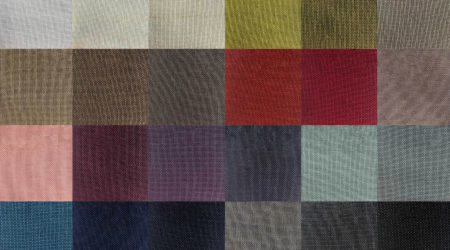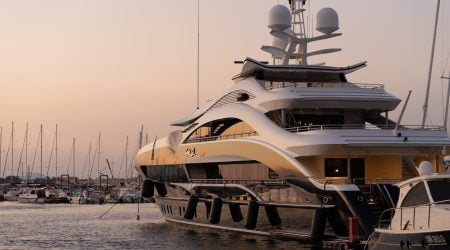New Mirage Voile IFR Range Available
Discover our brand new range of Mirage Voile IFR, made from 100% polyester and Inherently Flame Retardant.
Read MoreSpecialising in the production of theatre and stage drapes for over 30 years
When the Covid-19 pandemic confined almost the entire nation to their houses, and further inhibited many of life’s pleasures, many businesses had to adapt in order to provide their customers with something likened to normal life. One of the most heavily impacted industries during this time was theatre and live performance. The entertainment industry was the first to close, and the last to re-open. Theatres and live performance venues therefore had to be innovative with their services in order to sustain themselves.
When the Covid-19 pandemic confined almost the entire nation to their houses, and further inhibited many of life’s pleasures, many businesses had to adapt in order to provide their customers with something likened to normal life.
One of the most heavily impacted industries during this time was theatre and live performance. The entertainment industry was the first to close, and the last to re-open. Theatres and live performance venues therefore had to be innovative with their services in order to sustain themselves.
This is where virtual reality, also known as VR, became incredibly valuable and lucrative.
Something that is traditionally associated with the video gaming industry, virtual reality, in the context of the theatre, allows the user to immerse themselves in the production, without the physical need to be within the theatre environment. The benefit of this new service is that it offers every audience member a front row seat to the production they are watching. Particularly where this kind of view may have been inaccessible to some individuals before, VR productions afford this luxury with minimal effort or cost.
Some virtual reality theatre productions even go as far as to insert the audience into the play, as if they were in the scene with the actors. Where there is usually a degree of separation between the audience and the actors via a raised stage and lowered audience, VR allows individuals to get up close and personal with the performers, making the experience more personal.
VR theatre performances are easily accessible for many people, with companies such as the Commonwealth Shakespeare Company creating an adaptation of Shakespeare’s play Hamlet named Hamlet 360: Thy Father’s Spirit, which is available on YouTube. Big live production events like the Edinburgh Fringe have also taken advantage of the technology by using it to showcase some of the shows during the festival.
Furthermore, the subscription service LIVR also offers various productions that subscribers can watch and immerse themselves in, including theatre shows with celebrity cameos from Michael Fassbender in Finding Fassbender among others.
Music artists have also been applying the VR format to concert performances at increasing rates. It is likely that as long as audience interest in this technology continues to grow, the future of theatre will only become more and more intertwined with it.
As VR progresses and becomes more widely known within the industry, it will most likely become highly beneficial and convenient for those people who cannot always visit the theatre.
One of the only drawbacks to VR theatre shows is the absence of sensory stimulation. The atmosphere and smells are hard to recreate and the experience can feel like absorbing something second hand. From the anticipation of waiting for the show to start as the stage curtains draw back, sitting with an ice cream during the interval, and being immersed in the theatrical experience with hundreds of other like-minded people – these moments will be lacking. They are moments that can’t easily be replicated by virtual reality.
On the other hand, the major benefit of VR theatre is accessibility. Virtual reality theatre productions allow users to immerse themselves in a production from almost any location, without the physical need to be within a theatre environment.
Ultimately, the gradual rise in popularity of VR theatre has stemmed from the fact that it provides audiences with an option as to how they consume live performance. Particularly where the threat of Covid-19 is still looming, this new form of theatre allows audiences to experience live theatre wherever they see is best fit.
If you’d like to discuss the future of your theatre productions, please contact us here.

Discover our brand new range of Mirage Voile IFR, made from 100% polyester and Inherently Flame Retardant.
Read More
Discover our brand new range of Eco Voile IFR, made from 100% recycled polyester and Inherently Flame Retardant.
Read More
We now have IMO (International Maritime Organisation) Certification for the following qualities…
Read More